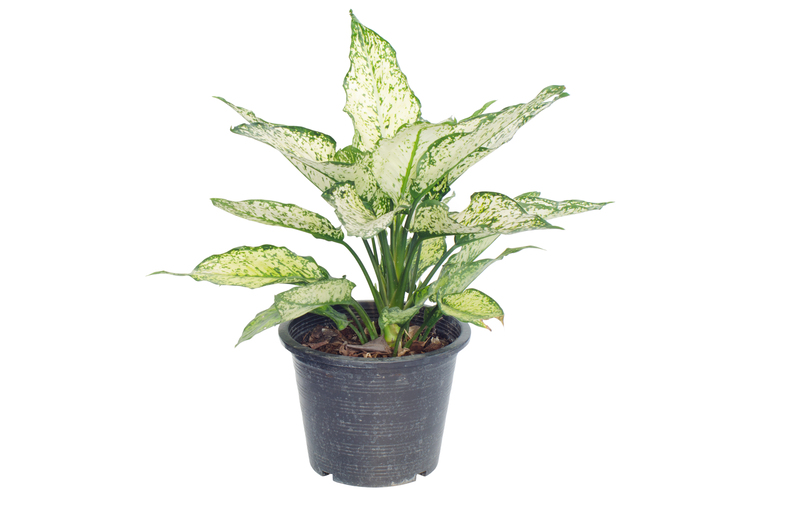Garden Armor: Fortify Your Plants Against Weather Threats
Posted on 11/09/2025
Garden Armor: Fortify Your Plants Against Weather Threats
An unpredictable climate, sudden frosts, scorching heat waves, torrential downpours, and relentless winds--modern gardeners are all too familiar with the mounting challenges that the weather poses. To succeed, every gardener must become a protector, employing clever strategies to shield vulnerable vegetables, flowering perennials, and prized shrubs. This in-depth guide explores how to use garden armor to fortify your plants against weather threats, ensuring a thriving and resilient outdoor space despite the whims of Mother Nature.

Understanding the Importance of Garden Armor
So, what is garden armor? Simply put, garden armor comprises a range of methods and materials used to defend plants from extreme weather conditions. Think of it as an essential toolkit for resilient gardening, encompassing everything from simple row covers to sophisticated windbreaks and living shields. As climate change intensifies weather variability, understanding and employing these protective techniques is no longer optional--it's critical for gardeners who wish to maintain healthy, flourishing plants year-round.
Main Weather Threats That Attack Your Plants
- Frost and Cold Snaps
- Extreme Heat and Sunburn
- Heavy Rainfall and Flooding
- Strong Winds and Storms
- Hail Events
- Sudden Temperature Swings
- Drought
Why You Must Fortify Your Garden
Weather-proofing your garden is vital for several reasons:
- Protects investments of time, effort, and money in your plants
- Preserves healthy crop yields and beautiful blooms
- Prevents loss and damage from unpredictable weather events
- Builds overall resilience for all plants in your yard
Types of Garden Armor: How to Protect Your Plants
Using the right combination of defenses helps every gardener guard against multiple threats. Let's examine the main forms of garden armor you can deploy for maximum weather resistance.
1. Physical Barriers and Covers
Protective covers are among the simplest and most adaptable forms of garden armor. These physical shields limit plant exposure to harsh elements.
- Frost cloths and row covers: Lightweight, breathable fabrics draped over crops to trap warmth and deflect frost.
- Cloche domes and cold frames: Temporary, clear structures--made from glass or plastic--that isolate vulnerable plants from chilling air and light frosts.
- Shade cloths: Special woven fabrics that let in air while reducing harsh sunlight, preventing sunburn on delicate plants during heat waves.
- Floating row covers: Great for short-term protection from both pests and weather, these easy-to-install fabrics can be placed directly on top of crops.
- Mulching materials: A thick mulch around roots shields soil from temperature swings, retains moisture, and slows down evaporation during dry spells.
- Windbreak panels: Staked wooden boards, burlap screens, or dense mesh panels serve as defensive walls, reducing wind speed around tender shoots.
Pro tip: Pairing different covers, such as a shade cloth with a mulch, provides multi-pronged protection against both heat and drought.
2. Living Shields and Structural Defenses
Nature itself provides excellent shields. Incorporate living and structural elements in your garden design for sustained, long-term weather defense.
- Hedges and windbreak trees: Hedgerows and rows of dense evergreens or bamboo act as natural windbreaks, reducing wind damage and helping maintain humidity by deflecting strong gusts away from your plot.
- Trellises and pergolas: These structures can be clothed in climbing plants or shade cloth, providing overhead protection from hail and scorching sunlight.
- Strategic garden design: Planting taller, hardier species to absorb wind on the edges, with more delicate varieties nestled safely inside, mimics how natural plant communities cope with weather extremes.
Expert tip: Layer your plantings for best protection--tallest plants on the wind-facing side, with shorter and tender species sheltered in their lee.
3. Smart Water Management and Drainage Armor
Excessive water can be just as damaging as drought. Suitable water management protects roots against both flooding and parching, no matter what the weather brings.
- Raised beds: Elevating your crops prevents flooding and encourages drainage during heavy rainfall.
- Soil amendments: Mixing sand and organic matter into clay soils improves drainage, limiting root rot after storms.
- French drains and swales: Simple landscaping techniques to divert excess water away from beds, minimizing ponding and root suffocation.
- Drip irrigation and soaker hoses: These allow deep watering during drought without waste or damage to foliage caused by sprinklers in the sun.
_Investing in water-smart solutions creates a protective buffer around your plants, letting you steer clear of both extremes--flood and drought._
How to Prepare for Specific Weather Threats
Our changing climate means that sudden, severe weather events are increasingly common. Here's how to tailor your garden armor for each major threat.
Frost and Freeze Protection
- Monitor local forecasts closely, especially in late spring or autumn. When a cold snap looms, cover plants in the afternoon before frost arrives so heat is trapped beneath the protection.
- Use thermal mass by placing water-filled jugs or stones around plants under covers--these absorb heat by day and release it at night.
- Opt for floating row covers for annual vegetables and low perennials. For larger shrubs, drape frost cloth or old bedsheets right to the ground.
- Remove covers during the day to prevent overheating and allow pollinator access.
Heat and Sunburn Defense
- Install shade cloth to reduce direct sunlight by 30-70% during peak summer temperatures.
- Mulch generously with straw, bark, or compost to trap moisture and cool root zones.
- Water deeply in the early morning to help plants prepare for a hot day ahead.
- Choose heat-resilient plants for sun-baked spots--lavender, salvias, and ornamental grasses thrive where others burn.
Flood and Heavy Rain Solutions
- Build raised beds or berms in low-lying gardens to direct water away from roots.
- Improve soil structure with compost, which helps soils absorb excess water while providing nutrients.
- Plant cover crops in winter to hold soil and reduce runoff during storms.
Wind and Storm Defense
- Stake tall plants--such as tomatoes or sunflowers--with robust supports to prevent snapping.
- Reinforce vulnerable structures (e.g., trellises, containers) before strong wind events.
- Establish living windbreaks for the long term using fast-growing trees or dense shrub borders.
Hail Protection
- Keep row cover hoops and netting handy to quickly shield vegetables and tender flowers from sudden hailstorms.
- Shelter delicate container plants under eaves or bring them indoors when hail is forecast.
Futuristic and Sustainable Garden Armor Innovations
As technology and environmental awareness grow, new solutions for plant fortification are emerging. Consider these sustainable approaches to weather-resilient gardening:
- Biodegradable frost blankets that you can compost at the end of the season
- Solar-powered smart sensors to monitor soil moisture and temperature, alerting you to rapid changes before damage occurs
- Modular, adjustable frame covers that fit any bed size, easily deployable during sudden threats
- Native mixed-species hedges offering powerful biodiversity benefits and lasting protection
Combining traditional wisdom with smart technology ensures your garden armor is both effective and environmentally-friendly.
Essential Tips: Building Your Personal Garden Defense Plan
Every garden is unique--exposure, microclimate, soil, plant choices, and available resources all influence your choice of garden armor. Use these core steps to develop a strong, customized protection strategy:
- Identify your primary weather risks by observing your garden's history and consulting local climate data.
- Prioritize at-risk plants--young seedlings and tropical exotics usually need the strongest protection.
- Stock up ahead of storms with easily stored row covers, mulch materials, and emergency supports.
- Secure any loose items and reinforce structures before predicted extreme weather events.
- Reinforce and rotate garden armor as your plants grow and seasons shift.
Routine checks and timely adjustments are the secret to robust, year-round garden fortification.
The Benefits of Fortifying Plants with Garden Armor
Implementing a comprehensive plant weather-defense plan isn't just about survival--it's about thriving. With reliable garden armor in place, you'll enjoy:
- Increased yields and healthier harvests from protected vegetables and fruit
- Longer blooming times for ornamental plants
- Reduced loss of expensive or rare plants during freak weather events
- Peace of mind, knowing you're prepared for anything nature sends your way
Remember, every layer of weather protection you add strengthens your garden's resilience--making it more beautiful and bountiful for longer.
Conclusion: Make Garden Armor Your Secret Weapon
In a world of uncertain weather, garden armor is truly your garden's best defense. By layering physical barriers, living windbreaks, sustainable mulches, and water-smart designs, you create a vibrant, protected refuge for your plants against any elements. Whether you're a beginner tending your first beds or a seasoned pro safeguarding a botanical masterpiece, investing in defensive strategies now will pay off for many years to come.
Don't let weather threats wipe out your hard work--embrace smart, eco-friendly fortification and give your plants the armor they need to flourish!

Frequently Asked Questions About Garden Armor and Plant Protection
Q: How do I choose the right garden armor for my climate?
Study your region's common weather threats. If late frosts are typical, prioritize frost covers and cold frames. For windy, coastal gardens, invest in windbreaks. For hot, dry climates, focus on mulches and shade cloth.
Q: Can I re-use garden armor materials year after year?
Yes! Most physical covers and structures can be stored and reused for several seasons. Clean and dry them thoroughly between uses to prevent mildew and prolong their life.
Q: Are there low-cost options for fortifying plants against weather?
Absolutely. Repurpose old sheets, cardboard, plastic bottles, or thrifted fabric to create quick covers and windbreaks. Mulching with leaves or grass clippings is low-cost and highly effective.
Q: How do I protect container plants from sudden weather changes?
Move mobile pots under eaves, against walls, or indoors during storms, heat, or frosts. Mulch the soil and consider temporary fabric covers too.
Take Action: Your Garden's Best Years Start with Strong Armor
Start building your garden armor today! With a little planning and the right supplies, you'll fortify your plants against weather threats--and enjoy a confident, abundant gardening season, no matter what climate surprises come your way.

